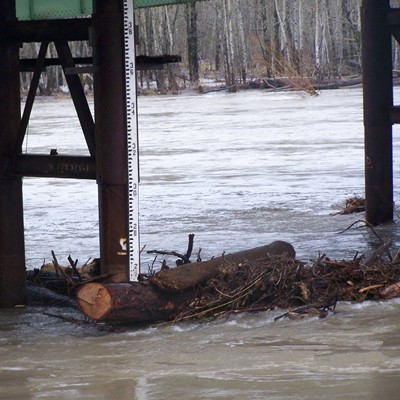UAF's Flood Monitoring Technology Uses Machine Learning
November 9, 2021

Flooding in Alaska and many areas of the U.S. is a real and ongoing hazard. Government and emergency management agencies have monitoring technology in place using stream gauges for flood warning. Continuity and accuracy of near real-time streamflow gauge data are critical for flood forecasting, assessing imminent risk and implementing flood mitigation activities. During flood hazard events though, high water and debris in streams often damage stream gauges, which then stop transmitting near-real time data. The loss of this data handicaps decision-making at critical points of a flood event.
Tim Petty and Prashant Dhingra, inventors from the University of Alaska Fairbanks, have received a Notice of Allowance from the United States Patent & Trademark Office for their patent application 16/016,243 directed toward “Streamflow Hydrology Estimate using Machine Learning.” SHEM is a new predictive model for providing accurate and timely proxy streamflow data for inoperative gauges. SHEM builds estimated datasets on the present and historical streamflow data alone through a machine learning process. In an event, when one stream gauge stops sending data, SHEM utilizes the historical data that it has already gathered and learned from, to re-build the streamflow dataset on the damaged or non-performing gauge. Using this method, lost data can be accurately estimated and then re-applied to fill those data breaks and continue sending critical data to emergency responders.
This new technology provides data for decision makers and first responders to effectively allocate resources, implement evacuations to save lives and reduce property losses. This new technology could literally be a life saver!
For more information on the patent process or innovation, please contact David Park at dspark@alaska.edu.


